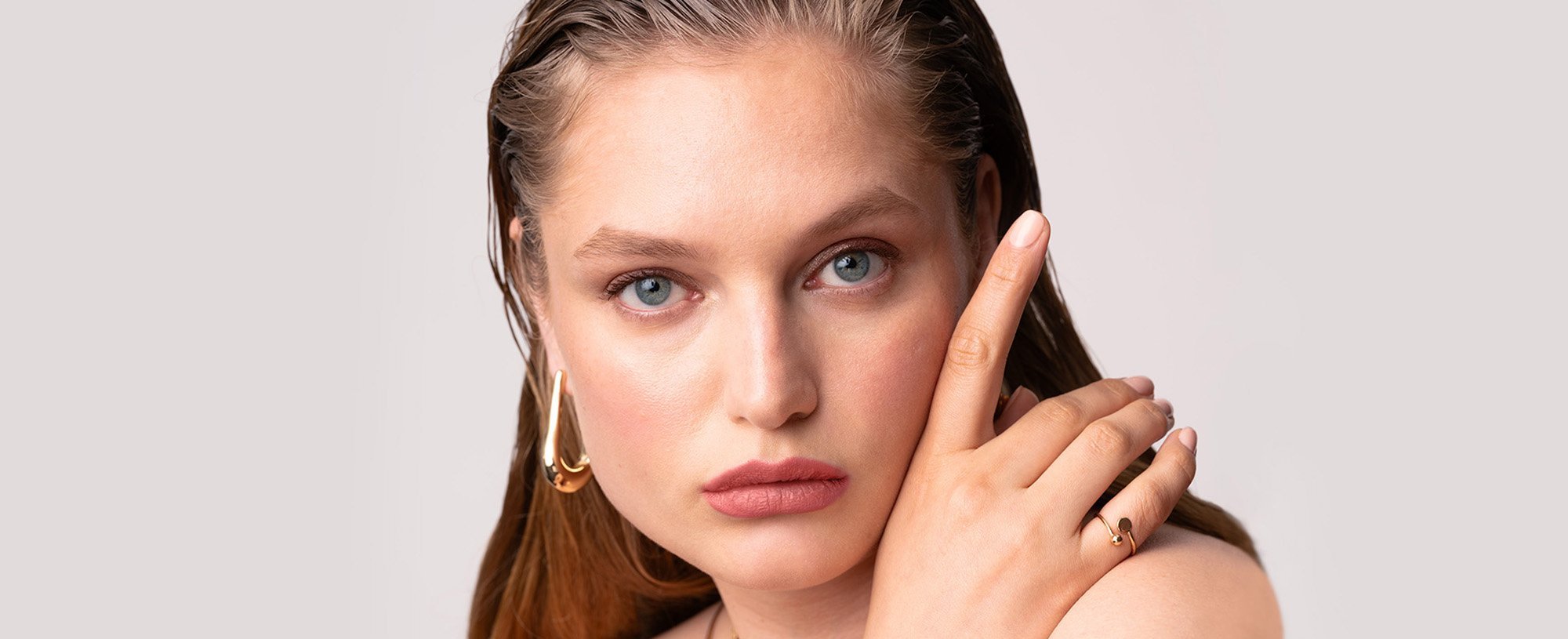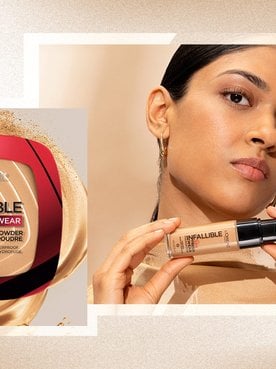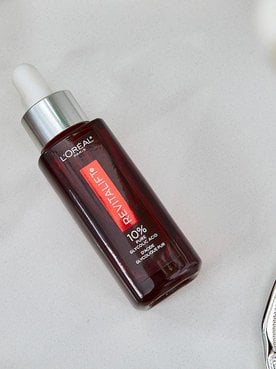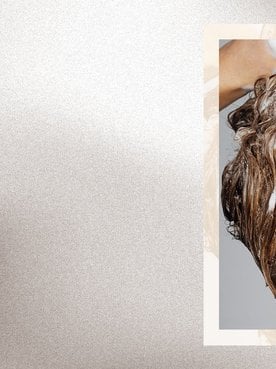When it comes to long-lasting, salon-worthy manicures, the debate between gel nails and acrylic nails continues to be a hot topic. Both offer durability, style, and serious aesthetic appeal. Whether you want nails that can handle a two-week vacation or ones that let you experiment with bold shapes and colors, your manicure choice matters. To help you figure out which option is better for you, here’s what you need to know about both gel and acrylic nails, from how they’re applied to how they hold up over time.
Gel Nails: Everything You Need To Know
Gel nails have gained popularity for their natural appearance and glossy finish. If you like your nails to look polished but don’t want to spend a ton of time maintaining them, gel nails are a solid option. They cure quickly under a UV or LED light and have a flexible feel that makes them very comfortable to wear.
How are gel nails applied?
Achieving a professional-grade gel manicure at home has never been easier. In this guide, we'll simplify the art of gel nail application into clear, manageable steps. Whether you're new to gels or simply looking to improve your skills, you'll soon master how to prep, apply, and cure gel nails for a sleek and lasting look.
Step 1: Prepping the natural nail
Begin the process by shaping your nails using a file, smoothing out any uneven edges, and creating the desired silhouette. Then buff gently all of the nail's surface to remove shine and create a slightly rough texture, which helps the gel adhere better. Finally, clean of any dust or oil with a nail cleanser or alcohol wipe.
Step 2: Applying the base coat
Apply a thin layer of gel polish base coat evenly across each nail. This step is essential for protecting the natural nail and anchoring the color layers that follow. Cure the base coat under a UV or LED lamp for about 30 to 60 seconds until it hardens.
Step 3: Adding color layers
Next comes the color. Depending on how opaque you want the color to be, paint one or two thin coats of gel polish. Cure each layer under the lamp between applications to lock it in and build long-lasting color.
Step 4: Sealing with a topcoat
To finish, apply a topcoat to seal in the color and add that signature gel-like shine. After a final round under the curing lamp, your nails will be fully set, glossy, smooth, and ready to go.
How long do gel nails last?
A typical gel manicure lasts two to three weeks, depending on your nail growth and how well you care for them. Compared to traditional nail polish, gel manicures are less prone to lifting and chipping, but regular maintenance is key. To keep them looking fresh and lasting longer, apply cuticle oil daily and use hand cream to prevent dryness.
How do you remove gel nails?
To safely remove your gel nails, you’ll need to soak them in acetone for about 10 to 15 minutes. Gently push off the softened gel with an orangewood stick or cuticle pusher. Avoid peeling or forcing the gel off to protect your natural nails.
Acrylic Nails: Everything You Need To Know
If you’re looking for dramatic length or bold shapes, acrylic nails might be your go-to. They’ve been around for decades and are known for their strength and sculptural possibilities. We recommend having this process done by a professional, as it is a little bit trickier than the gel nail process and needs a bit more expertise to get it right.
How are acrylic nails applied?
Acrylic nails offer endless style possibilities, giving you that coveted salon-perfect finish. But to get the best results, it’s helpful to know exactly what your nail technician is doing during each stage of the process. In this detailed guide, we'll break down the acrylic nail application from prep to polish, highlighting key points and helpful tips so you're fully informed, comfortable, and ready to enjoy beautiful, lasting nails.
Step 1: Creating the acrylic mixture
A nail technician starts by mixing a liquid monomer with a powder polymer. When combined, these two products form a thick, moldable paste. This paste is what forms the base of your acrylic nails.
Step 2: Applying the acrylic paste
The technician will use a brush to apply the acrylic paste directly to your natural nail or over a nail extension tip. They sculpt the paste into the desired shape, whether that's a square, almond, coffin, or stiletto. The paste begins to harden almost immediately as it's exposed to air.
Step 3: Shaping and buffing
Once the acrylic has fully hardened, it's time to shape. The nail is filed down to smooth the surface and refine the shape, and then it's buffed to remove any uneven texture.
Step 4: Painting and finishing
Finally, the nails are painted with either regular nail polish or gel polish, depending on the desired look and longevity. A topcoat is usually added for extra shine and protection, sealing in the color and giving the nails a polished finish.
How long do acrylic nails last?
With good care, acrylic nails can last three weeks or sometimes even longer. But as your natural nails grow out, you’ll likely start to see a gap near the cuticle. To keep everything looking fresh and prevent lifting or breakage, it’s best to get a fill every two to three weeks. During a fill, your tech will file down the old acrylic and add new product to blend everything back in seamlessly.
How do you remove acrylics?
Like gels, acrylic nails require soaking in acetone for removal. This process can take around 20 to 30 minutes and may involve gently filing the top layer to help the acetone penetrate. It’s best to have them removed professionally to prevent damage.
Gel Nails vs. Acrylic: What’s the Difference?
If you're torn between gel vs. acrylic nails, it really comes down to how they look, feel, and wear. Each type has its own vibe: gel nails are all about that glossy, natural finish, while acrylics are strong, bold, and customizable. Knowing these differences makes it easier to pick what fits your style and routine.
Appearance and finish
Gel nails have that smooth, glossy finish that looks super natural, like your own nails, but better. They’re also flexible, so they tend to feel a bit lighter and more comfortable. Acrylic nails, meanwhile, are firmer and can be sculpted into longer, bolder shapes, which is great if you want drama. Just know they can sometimes look less natural if they’re not blended well.
Health and safety
Both gel and acrylic nails are totally safe when applied and removed the right way, but there are a few differences to keep in mind. Gel is a bit gentler overall and doesn’t involve as much filing. Acrylic nails use stronger chemicals and need more shaping, which can wear down your natural nails over time if you're not careful or go too long without breaks.
Cost
If you're wondering how much acrylic nails cost, you need to know both gel nails and acrylic nails usually fall in the $30 to $70 range for a standard set, but the final price depends a lot on where you live and which salon you visit. If you’re getting extras, like nail art, long extensions, or gel polish layered over acrylics, you might end up paying anywhere from $50 to $100.
Acrylics can feel more expensive upfront, but they might actually save you money in the long run since you can get them filled instead of starting from scratch. Fills usually cost around $20 to $40 and help extend the life of your set. With gel nails, you’ll likely need a full redo every few weeks to keep them looking fresh.
Which Manicure is Right For You?
Everyone's nail needs are different. Here’s how to find the best fit for your style, habits, and nail health.
If you want low maintenance and a natural Look...
Go for gel nails. They’re perfect if you prefer a manicure that looks sleek, feels light, and requires minimal upkeep between salon visits. Plus, the high-shine finish always looks polished, even as your nails grow out.
If you want long-lasting strength or dramatic shapes...
Acrylic nails may be your best bet. They’re ideal for bold shapes, extra length, or creative designs that won’t easily chip or break. If you're into detailed nail art or want your manicure to really stand out, acrylics give you a lot more room to play with different styles.
For nail biters or weak nails
Acrylics provide reinforcement and added protection, which is great if you're trying to stop biting your nails or want something strong and durable. But gels are usually more lightweight and gentle, especially over time. If your goal is to slowly grow out healthier nails, gel might be a better long-term choice.
How to Maintain Beautiful Skin and Nails
Great nails deserve great care. In addition to regular manicures, give your hands and nails some daily care.
Hydration
Dry cuticles can make even the best manicure look less polished. Apply cuticle oil at night to keep the skin around your nails hydrated and healthy. Use an orange stick to gently push back your cuticles to maintain a neat look between appointments. Also, try the L'Oréal Paris True Match Lumi Glotion Natural Glow Enhancerwith shea butter to keep your hands with a healthy glow that pairs beautifully with any manicure.

Protection
Household chores can take a toll on your nails. Wearing gloves when washing dishes or cleaning not only helps protect your gel manicure or acrylic nails, but it also keeps your skin and cuticles from drying out due to harsh chemicals. And don’t forget sun protection, your hands are just as vulnerable to UV damage as your face. Try the L'Oréal Paris RevitaLift Triple Power Moisturizer with SPF 30to keep your hands looking young, hydrated, and shielded from daily sun exposure.

Frequently Asked Questions
Are gel nails more expensive than acrylics?
Generally, yes, but pricing varies depending on where you go and what designs you choose. Some salons charge more for gel nails due to the curing technology and faster application process.
Can you switch between gel and acrylic?
Absolutely. It’s possible to switch from gel nails to acrylic nails, or vice versa, but it’s best to give your nails a little break in between or have the transition done professionally to avoid damage.
Which is better for weddings or events?
Both options work beautifully. Gel nails offer a more natural, glossy finish ideal for classic looks. Acrylics are perfect for statement shapes or elaborate nail art, especially if you want them to last longer.
Can you DIY gel or acrylic nails at home?
You can, but there’s a learning curve. DIY gel kits are more beginner-friendly and widely available. Acrylic nails are trickier and require good ventilation, proper tools, and experience to get salon-worthy results safely.
Next Up: Why You Should Wear SPF During Your Gel Manicure, According to a Dermatologist
Photo courtesy of L’Oréal Paris







